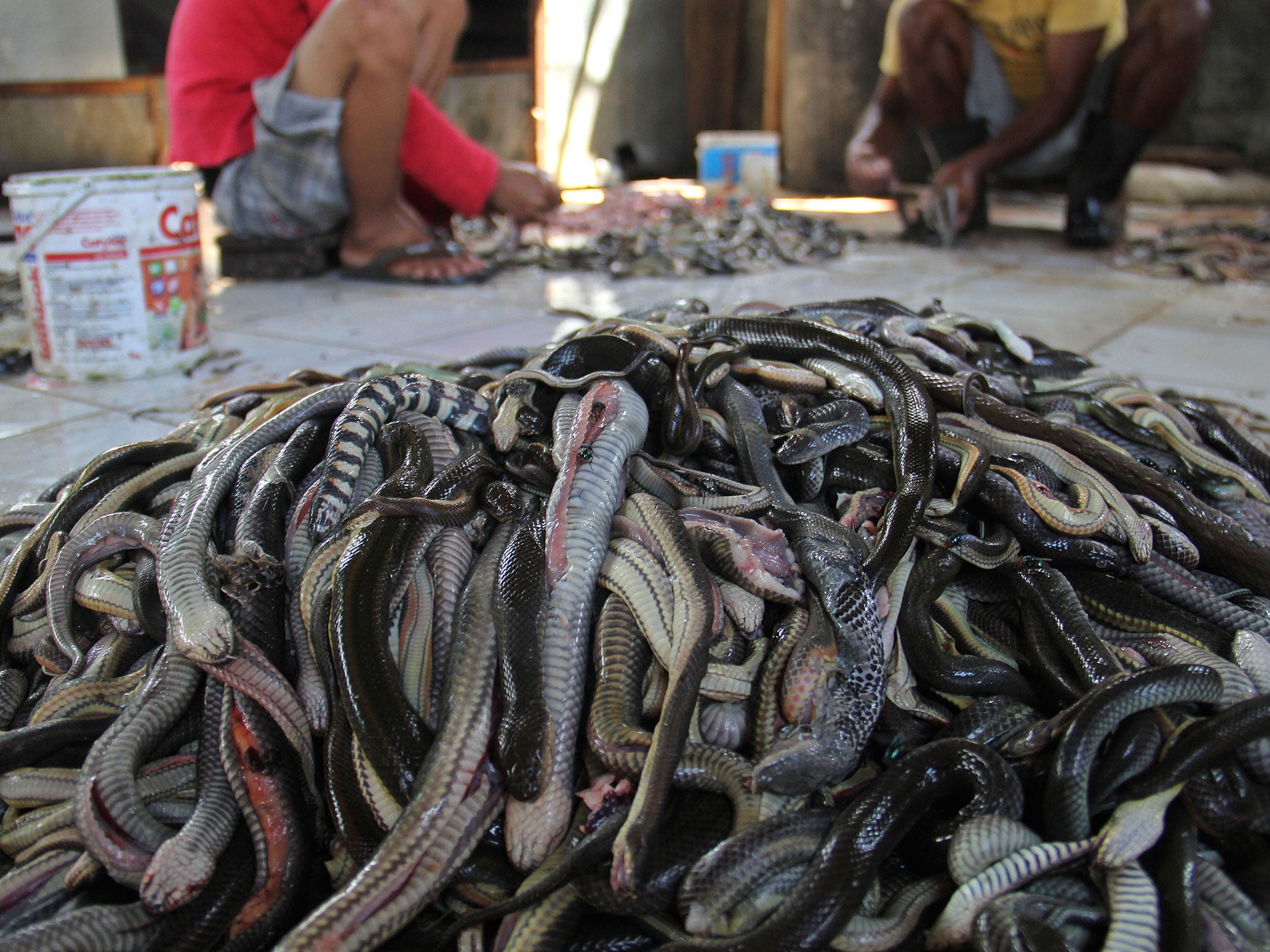Stomach-churning images show the shocking truth about Indonesian snake slaughterhouses
The trade in snake-skin has long been condemned by campaigners who say the methods used to kill the animals are exceptionally cruel and outdated

Your support helps us to tell the story
This election is still a dead heat, according to most polls. In a fight with such wafer-thin margins, we need reporters on the ground talking to the people Trump and Harris are courting. Your support allows us to keep sending journalists to the story.
The Independent is trusted by 27 million Americans from across the entire political spectrum every month. Unlike many other quality news outlets, we choose not to lock you out of our reporting and analysis with paywalls. But quality journalism must still be paid for.
Help us keep bring these critical stories to light. Your support makes all the difference.
These stomach-churning images show the dark truth about how some of the most desirable fashion products in the world are made.
Taken inside a snake slaughterhouse in the village of Kertasura, Cirebon, Indonesia, they show workers skinning piles of snakes which are then sold to factories to be made into bags, shoes, wallets and belts.
The trade in snake-skin has long been condemned by animal rights campaigners who claim that methods used to kill snakes are exceptionally cruel and outdated.
Most often snakes are stunned by a blow to the head with the handle of a machete before a water hose is forced between their jaws. The water is then turned on and the animal fills up swelling like a balloon.
A leather cord is then tied around the creature in order to prevent the liquid escaping. The skin is dyed to order and sent to a tannery.
The creature, which is usually still alive, is then impaled on a hook and the skin is pulled off before the animal is left to die an agonising death of dehydration and shocking pain. The meat is then sold to eat.
In some cases the killing of snakes is arguably even crueler. In Vietnam snakes are often inflated with air compressors until they finally suffocate, elsewhere the reptiles are skinned alive after being nailed to a tree.
The price of a bag made from snake skin costs between 150,000 rupiah (£9) and 300,000 rupiah (£18), depending on its size.
When snake skins reach Western fashion houses their price can increase dramatically and sell for up to £2,000.
Subscribe to Independent Premium to bookmark this article
Want to bookmark your favourite articles and stories to read or reference later? Start your Independent Premium subscription today.
Join our commenting forum
Join thought-provoking conversations, follow other Independent readers and see their replies
Comments